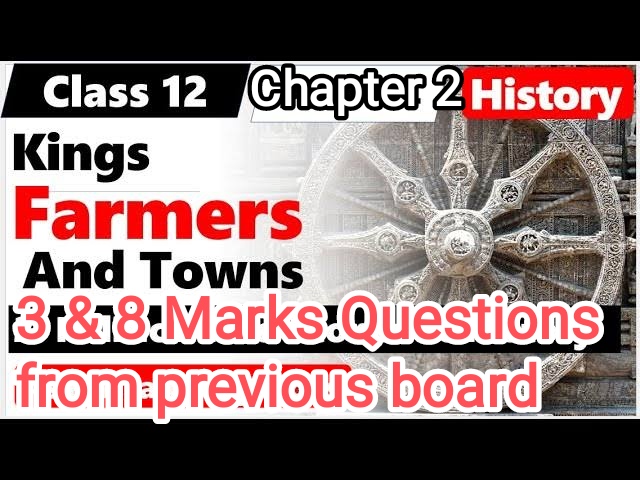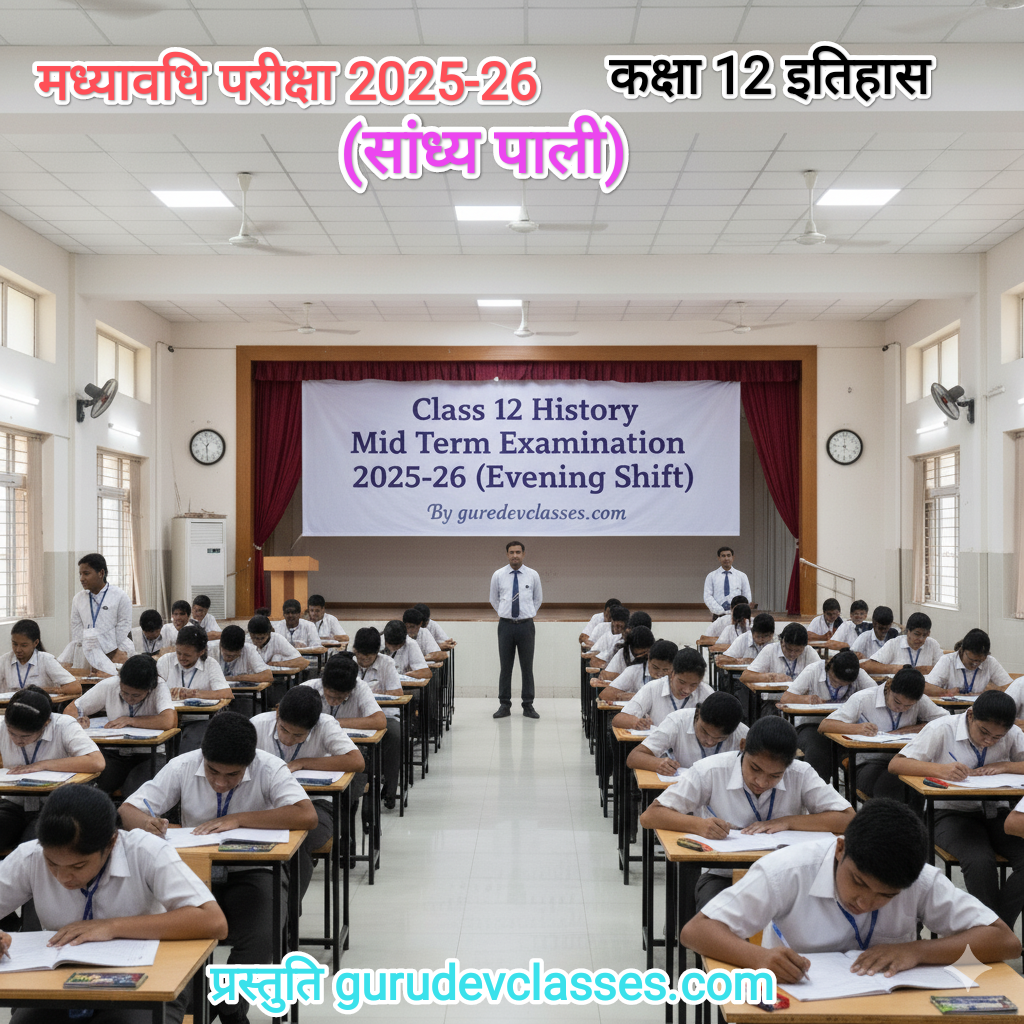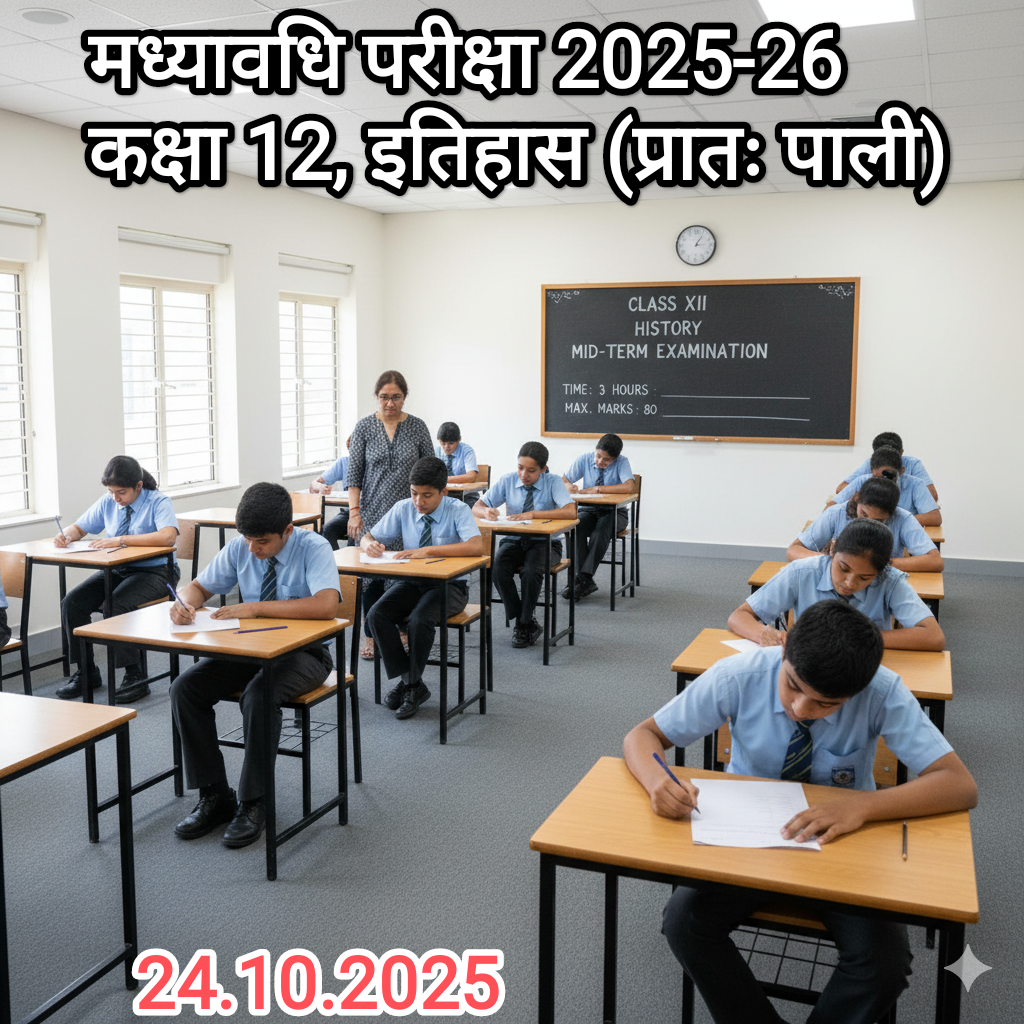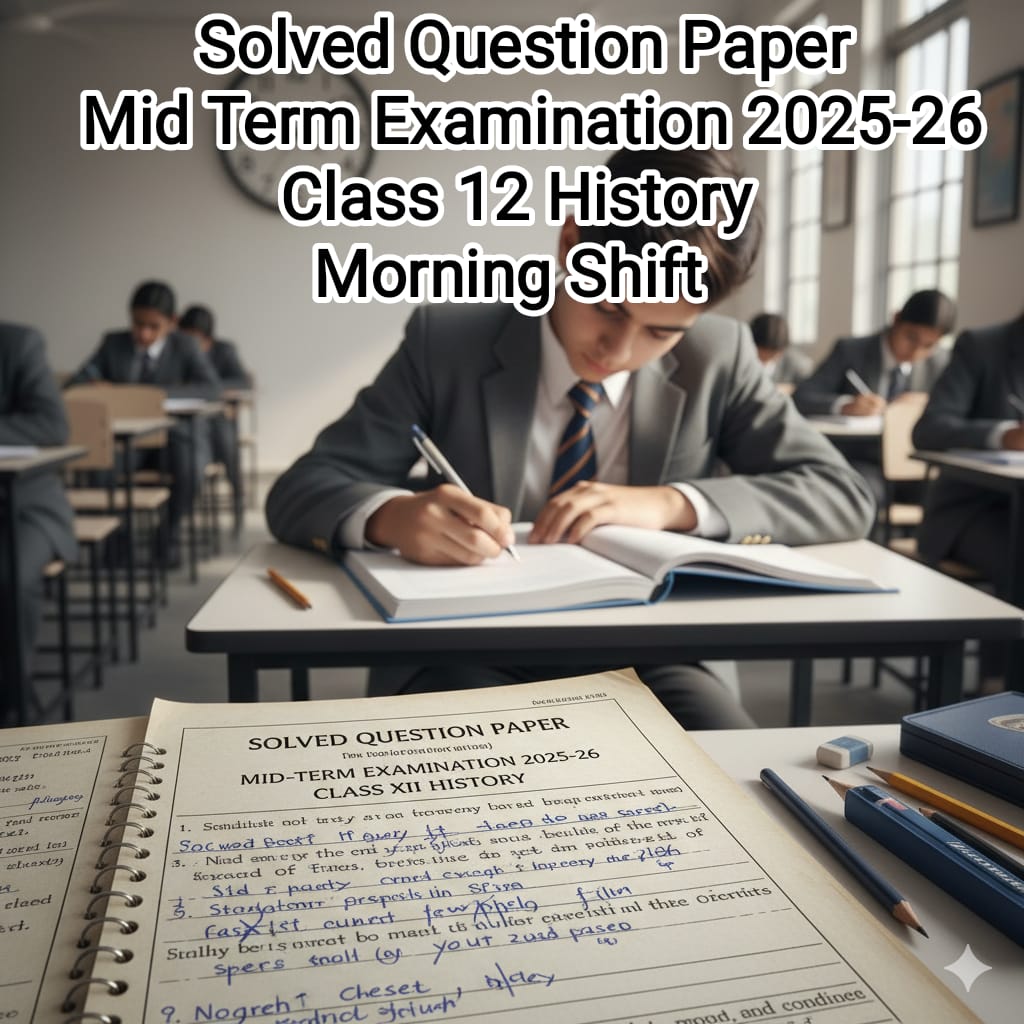3-mark and 8-mark questions with answers
3-MARK QUESTIONS (80–100 words)
Q1. Who composed the Prayaga Prashasti? What does it tell us about Samudragupta? (CBSE 2013)
Answer:
- The Prayaga Prashasti (Allahabad Pillar Inscription) was composed by Harishena, the court poet of Samudragupta.
- It praises Samudragupta’s military achievements, conquests, and generosity.
- It describes him as an “Uttarapathapati” (lord of the north), conqueror of dakshinapatha, and patron of Brahmanas.
Q2. What is the importance of inscriptions for reconstructing history? (CBSE 2011, 2014)
Answer:
- Inscriptions provide direct, contemporary evidence of political events, royal achievements, and administration.
- They record genealogies, victories, land grants, religious donations, and social practices.
- They help identify dates, places, and historical personalities when literary sources are silent or mythological.
Q3. Why is the sixth century BCE often considered a major turning point in early Indian history? (CBSE 2010)
Answer:
- It marked the second urbanization in the Ganga valley after the Harappan period.
- Rise of Mahajanapadas and powerful states with new forms of administration.
- Development of iron technology, agriculture expansion, and growth of trade and coinage.
Q4. Mention three limitations of using inscriptions as historical sources. (CBSE 2015)
Answer:
- Many inscriptions are eulogies that exaggerate the king’s achievements.
- They may be damaged, incomplete, or lost, making interpretation difficult.
- The language and script may be difficult to decipher, and sometimes only elite perspectives are represented.
Q5. How did punch-marked coins contribute to our understanding of ancient economy? (CBSE 2016)
Answer:
- Punch-marked coins, issued from c. sixth century BCE, indicate the use of metal currency in trade.
- They suggest commercial growth, urbanization, and tax collection in monetary form.
- The symbols reveal state authority, merchant guilds, and cultural motifs of the period.
Q6. Mention three features of the Mauryan administration as described in the Arthashastra. (CBSE 2018)
Answer:
- Centralized monarchy headed by a powerful king.
- Appointment of officers for revenue collection, espionage, and law enforcement.
- Emphasis on public works like irrigation, roads, and trade regulation.
Q7. What information is given in the Hathigumpha inscription of Kharavela? (CBSE 2009)
Answer:
- Records Kharavela’s achievements as ruler of Kalinga.
- Mentions military campaigns against Magadha and western kingdoms.
- Describes his patronage of Jainism, public works, and cultural development.
Q8. What were the causes of the decline of the Harappan cities? (CBSE 2011)
Answer:
- Environmental changes – floods, drought, or river course shifts.
- Over-exploitation of resources leading to ecological degradation.
- Decline of long-distance trade and political instability.
8-MARK QUESTIONS (250–300 words)
Q1. Discuss the main features of the Mauryan Empire as described in inscriptions and the Arthashastra. (CBSE 2014, 2018)
Answer:
- Centralized Monarchy – King as supreme authority, assisted by council of ministers (mantriparishad).
- Bureaucratic Administration – Specialized officers for tax collection, law enforcement, espionage.
- Revenue System – Land revenue as main income; taxes on traders, artisans, and agricultural produce.
- Military Organization – Standing army with infantry, cavalry, chariots, and elephants.
- Public Works – Roads, irrigation canals, rest houses for travellers.
- Law and Order – Maintenance of justice through appointed officers.
- Economic Policies – Regulation of trade, weights and measures, state control over some industries.
- Dhamma Policy (Ashoka) – Religious tolerance, welfare measures, animal protection.
Q2. How do inscriptions help in reconstructing the history of the Mauryan period? Give examples. (CBSE 2013, 2017)
Answer:
- Direct Records – Ashokan edicts reveal policies, administration, and moral teachings (dhamma).
- Political Extent – Rock and pillar edicts found across India show Mauryan territorial reach.
- Language & Script – Prakrit in Brahmi script indicates common language for governance.
- Social Conditions – Emphasis on harmony between communities, protection of animals.
- Economic Insights – References to roads, irrigation, and trade suggest economic planning.
- Religious Outlook – Support for Buddhism, but also tolerance for all faiths.
- Genealogies – Inscriptions list royal titles and succession.
- Examples – Rock Edict XIII describes Kalinga war and Ashoka’s remorse; Minor Rock Edicts record personal messages.
Q3. Explain the features and significance of the Prayaga Prashasti (Allahabad Pillar Inscription). (CBSE 2012, 2015)
Answer:
- Composed by – Harishena, court poet of Samudragupta.
- Language & Script – Sanskrit in Nagari script.
- Genealogy – Lists ancestors of Samudragupta, establishing legitimacy.
- Military Achievements – Describes conquests in Aryavarta and Dakshinapatha.
- Diplomatic Relations – Mentions friendly relations with forest chiefs and neighboring kingdoms.
- Religious Patronage – Samudragupta as supporter of Brahmanas.
- Title Claims – Portrays him as “Uttarapathapati” and universal monarch.
- Historical Value – Valuable source for understanding Gupta political history, military policy, and cultural ideals.
Q4. Explain the main features of urban centers in the early historic period. (CBSE 2008, 2010)
Answer:
- Second Urbanization – Emerged in Ganga valley from c. sixth century BCE.
- Mahajanapada Capitals – Fortified cities like Rajagriha, Pataliputra.
- Economic Base – Agriculture supported by iron tools and irrigation.
- Trade Networks – Inland and maritime trade using punch-marked coins.
- Craft Production – Specialization in pottery, beads, textiles, metal goods.
- Religious Centers – Monasteries and temples attracting pilgrims.
- Urban Planning – Fortifications, drainage, market areas.
- Cultural Exchange – Cosmopolitan populations due to trade and migration.
Q5. Describe the role of coins in reconstructing ancient Indian history. (CBSE 2015, 2019)
Answer:
- Economic Indicators – Show monetization of economy.
- Trade Evidence – Presence in different regions shows trade links.
- Political Authority – Rulers issued coins with symbols or names.
- Cultural Symbols – Depict gods, animals, or motifs reflecting beliefs.
- Chronological Data – Help in dating dynasties and events.
- Technological Skill – Show metal quality, minting techniques.
- Punch-marked Coins – Indicate early state involvement in economy.
- Foreign Coins – Indo-Greek and Roman coins show international contacts.







